Merchant Management – The Key Challenges
Large online marketplaces, whether B2B or B2C, or any other businesses connecting buyers to sellers (food ordering platform, ride-hailing apps, logistics companies, payment gateways, and other similar businesses) face several challenges in managing their merchant operations. As you are here reading this, I assume you are aware of these challenges and are probably looking for a merchant management system to help you overcome them.

Here are the challenges that you are likely trying to overcome:
- Effectively acquiring and onboarding thousands of new merchants.
- Ensuring their speedy verification.
- Keeping the old merchants engaged even as you onboard new ones every day.
- Ensuring high productivity among your field teams onboarding new merchants and engaging existing ones.
- Analyzing the performance of different merchants and your teams as you decide the next course of action.
Effective merchant management entails addressing all these challenges in one easy-to-use platform. Let’s discuss how:
Key benefits of using a merchant management system:
Most of the aforementioned challenges can be overcome by empowering your field workforce with a mobile CRM meant for merchant onboarding teams. Here’s what a perfect merchant management solution should allow you to do:

1. Productive merchant onboarding team
Efficiently handling a field workforce is never easy. The difficulty exacerbates when the field team is huge (which is generally the case with merchant onboarding teams). So you need to empower your teams to handle challenges specific to merchant onboarding.
Equipped with these features, some of our customers have reported an increased task achievement rate by 60 to 70%.
a) Day and route planning: When a merchant onboarding agent has tens of merchants to visit in one day, it helps to not only plan their complete day but inform them of the best routes to follow as well for high productivity.
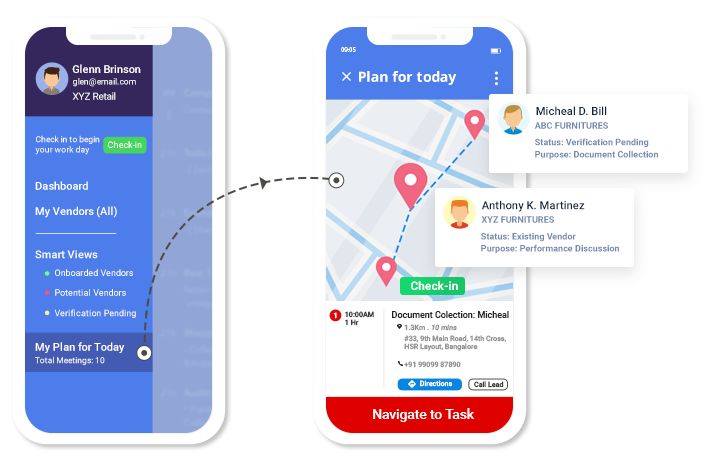
b) Dynamic forms with smart data input: While generic mobile sales apps allow you to add new leads (merchants in this case), an app built for merchant onboarding teams goes a step ahead. It considers specific factors, like the difference in the products each of the merchants might be selling. Adding a new merchant in the Electronics category might need a completely different kind of data input form than say a merchant in the Office Products category. Dynamic forms allow your agents to select the right kind of form, thereby saving them unnecessary confusion and clicks during new merchant addition, saving their time.
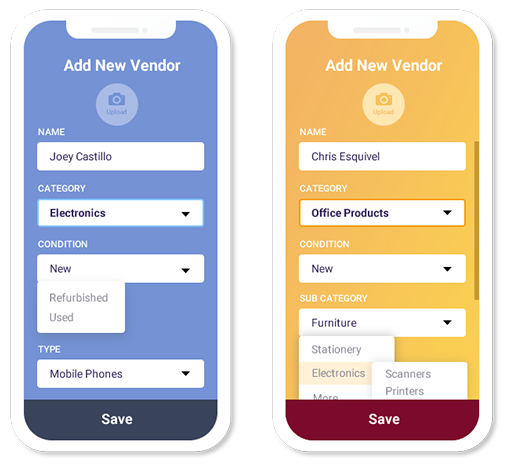
c) Merchants Near Me: Allowing your agents to identify merchants in nearby locations can be a great productivity-booster. Imagine a merchant onboarding agent at a lead location with 5 more merchants in the vicinity. With a mobile app to inform them of this, they can visit and onboard these merchants as well, making the process much more efficient.
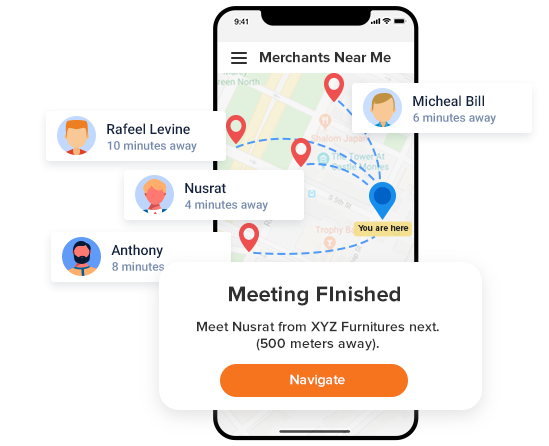
d) Timely lead deduplication: While a good mobile app would allow your teams to identify a duplicate lead as soon as they are entered in the system, a great merchant onboarding app allows this instantly with the input of a single field. As soon as the agent enters an identifier field – like phone number, he’s notified that the merchant already exists, thereby saving his time.
2. Fast merchant onboarding and verification
a) Instant document upload and verification: Allow your agents to digitally upload all the necessary documents for merchant addition and verification easily. The documents can be the store pictures, business registration documents for the merchant, and anything else that’s mandated by your merchant onboarding process. This can even make use of OCR (Optical Character Recognition) software to ensure that the upload and verification processes are completed in minutes.

b) One-click verification for managers: To speed up the process of merchant verification, and therefore, onboarding, the field app should directly connect to the web systems being used by managers, allowing them to see the merchant details, the uploaded documents, and accept or reject them with minimal effort.
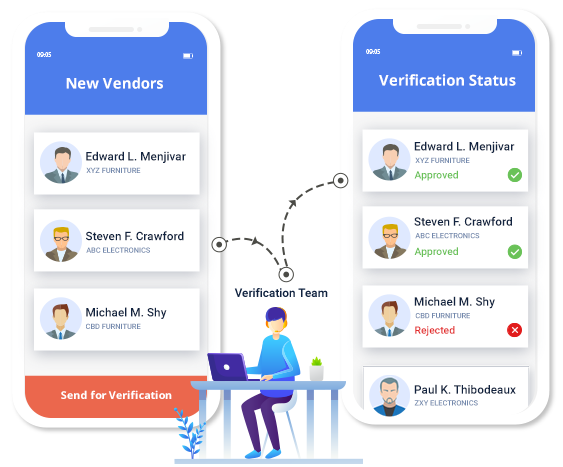
c) Escalations: If the verification isn’t happening fast enough, this can be escalated to the managers, if needed.
d) Automated stage change and seamless team collaboration: As soon as the onboarding task is completed, the lead stage can be changed, and the lead passed along to the next team, ensuring fast and seamless team collaboration.
3. Merchant performance tracking and engagement
A good merchant management system would allow you to track the performance of different merchants, manage their lifecycles, and notify the merchant engagement teams of low performing or inactive merchants so that necessary actions can be taken to engage or reactivate them.
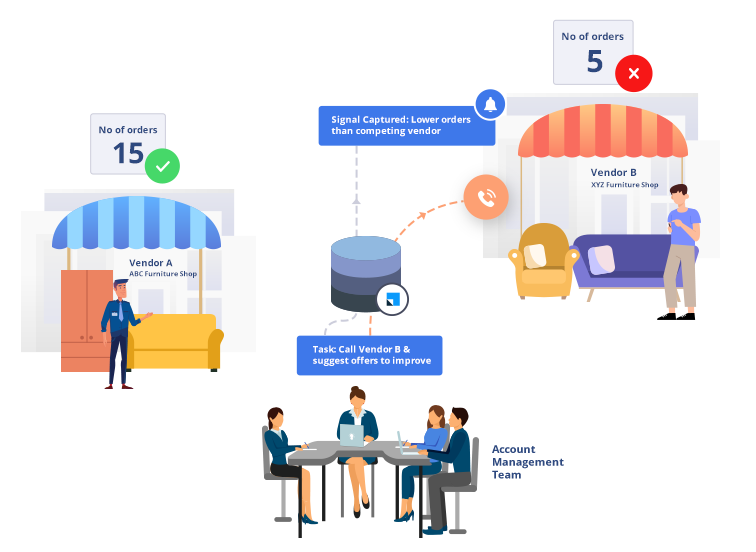
4. High operational efficiency
I) Automated team monitoring
Managing a large team is hard. Even harder is managing a large team that a) works remotely or b) is constantly on the move (which is the case with merchant onboarding teams).
Your managers need tools to assess if every one of your several thousand field agents is putting their best effort in, without manual intervention.
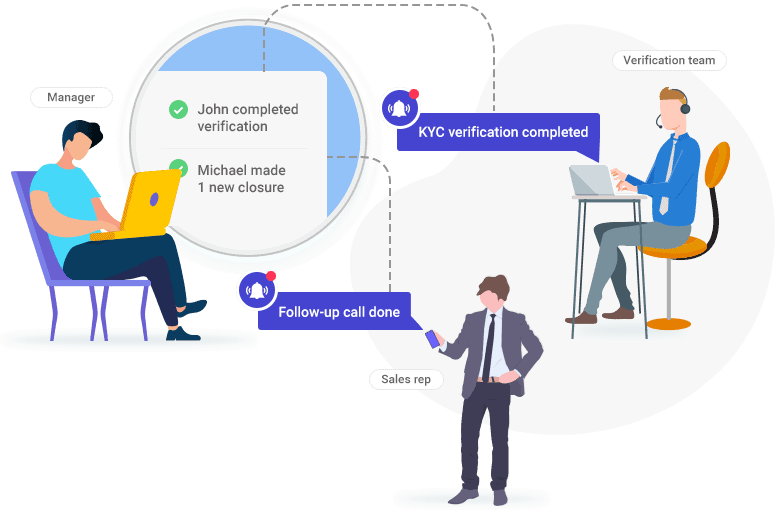
Here’s how a good merchant management system will automate agent tracking and several other tasks like timely team check-ins, managing their attendances and more:
a) Check-in/out restrictions: Check-in/check-out restrictions broadly entail two things: Agents cannot begin their workday without checking in virtually (with their mobile app), and they can’t check-in from any random location. While this may seem like micro-management, it needs to be a part of your process for two reasons:
- If check-ins are not mandatory, you won’t automatically know which of your thousands of FOS agents are working today, and which ones are on leave, making attendance tracking and regulation a manual task, which can be almost impossible, and a massive waste of time, when you have thousands of agents on the field.
- If you allow people to check-in from any random location (instead of a specific meeting location, or the first merchant’s location according to an agent’s day plan), you will never be able to keep a tab on where your agents are. And even though most people want to put honest work every day, you’ll not be able to differentiate between genuine and fraudulent activities.
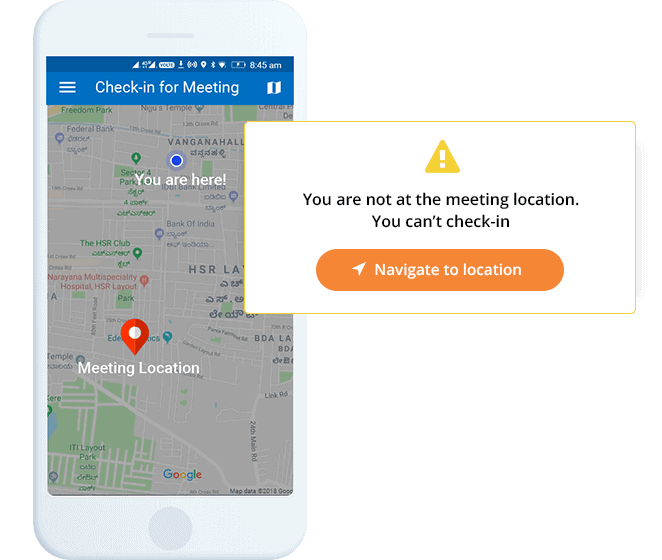
II) Automated Attendance Management
Making check-in activities mandatory allows you to make attendance management of your field agents automated. Several of our customers have reported an increase in their operational efficiency by 100% by simply using this feature.
III) Automated Payout Calculation
This is, again, controlled by the check-in/check-out feature. Because the system would automatically know how many days your employees have worked in a month, which you can then link to your payroll software.
5. Automated people management – new hires and churn
When field sales teams have a strength of a few thousand, a high churn rate is unavoidable. In such cases, keeping accurate records of the currently active agents becomes difficult. Automating this churn management can help you not only increase the efficiency of your operations but allow you to calculate pay-outs accurately for your active and inactive employees.
a) Auto-deactivation of inactive employees: Imagine not having to look for employees that may have left the organization manually, while the system takes care of which ones to eliminate from payroll. This is what a good merchant management system offers. An effective automation tool will automatically deactivate agents that are inactive on their app for “n” number of days.
b) Auto-mapping of their last working day: This would help you ensure that the final payouts that you are making to your inactive employees are completely accurate, helping you avoid any conflicts or tackle any payment claims that aren’t genuine.
c) Auto-allocation of their merchants for zero leakage. Every one of your merchant onboarding agents might be handling thousands of merchants. With constant employee churn, these merchants would not have an agent associated with them. Therefore, allowing bulk allocation of merchants to other agents either automatically or manually is very important.
d) Bulk addition/removal of agents and hierarchy management: With almost constant large-scale churn and hiring, you need to be able to add or remove agents in bulk and under the right reporting managers.
e) Identifying the best workforce agencies: In case you use agencies to hire contract employees, you should be able to identify the best agencies for you in terms of employee stickiness. You’ll be able to do this as well with a merchant management app aimed at increasing your team productivity and operational efficiency.
6. Zero fraudulent activities or misrepresentations
A common problem that plagues the managers while handling merchant onboarding teams is mislocation. Avoiding misrepresentations are crucial to have an efficient workforce. When a number of users misrepresent numbers, the effect snowballs and can substantially hurt your bottom line. Here are a few ways a CRM can obviate problems related to this:
a) Geotracking and geo-fencing: Geofencing enables managers to prevent fraudulent check-ins, users cannot work on their leads, until they have checked-in. This ensures both the correctness of reports and prevents fraudulent practices.

b) Avoiding Location Manipulation: A common tactic to misreport the current location is by using a VPN. A VPN enables users to pass off a virtual location as a real one. This can be easily solved by using a capable CRM software. For instance, with LeadSquared, a VPN user will immediately be identified and shown the message: Location is not authentic.
c) Real-time verification Storefront image, GST image, etc. right from the mobile app (people have to click a pic at the particular point only, device upload not allowed to prevent fraudulent uploads/misrepresentation).
7. Motivated Teams
Along with keeping a close eye on the merchant onboarding team, a merchant management system should also include incentives to keep field teams motivated. Studies have shown that when prompted with proper incentives people tend to work harder.
Our customers have reported a substantial increase in efficiency due to incentives visibility – around a 20% increase in task fulfillment rate.
8. High adoption rates
When the churn rate is high, a lot of resources have to be devoted for training fresh recruits. This could incur considerable costs. To reduce this, a reliable method is making use of technology and making training resources available to them on mobile apps. Also, an easy to use and intuitive platform is needed for successful large-scale adoption.
9. Reports to constantly improve
While handling millions of merchants and thousands of agents, it is imperative to have a practical and convenient reporting system in place. After all, improvement vitally depends on inspections. A good reporting system should allow you to have easy access to nuanced performance details of all your employees.
Features like summary reports, hierarchy based reports, and dashboards help you in building such a system.
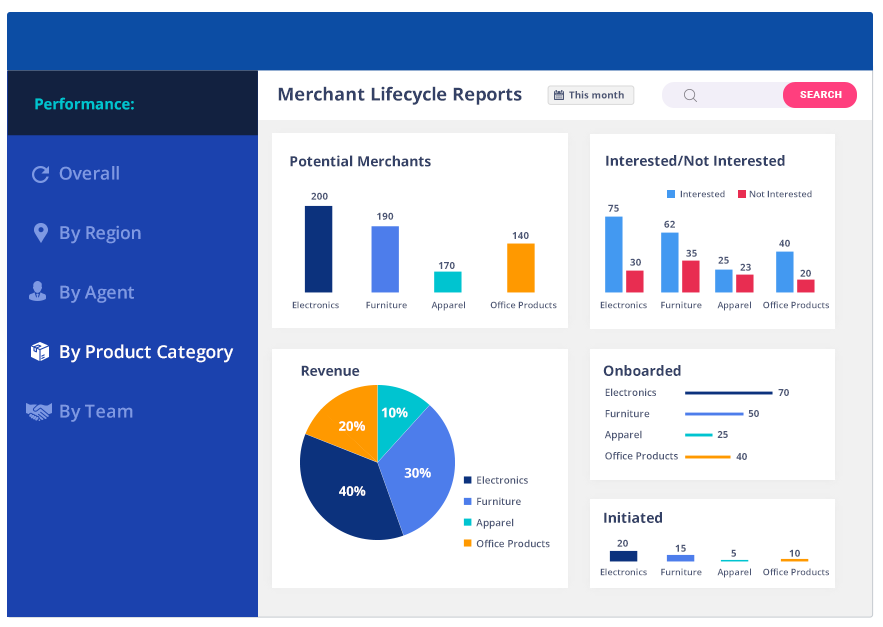
In Conclusion
Managing merchant operations can be a cumbersome process. With an effective tool, this process can be segmented, and hence, simplified. Be it managing the merchants’ day-to-day jobs, tracking their leads and locations at all times, or simply assisting them in the different aspects of their trade, a good merchant onboarding, and management system can do it all. It can, therefore, make it possible for you to improve their time management and efficiency, ultimately increasing your own profitability.








![[Webinar] How Real Estate Developers & Brokers can survive & thrive post - COVID 13 How Real Estate Developers & Brokers can survive & thrive post - COVID](https://www.leadsquared.com/wp-content/uploads/2021/11/MicrosoftTeams-image-10-80x80.png)
